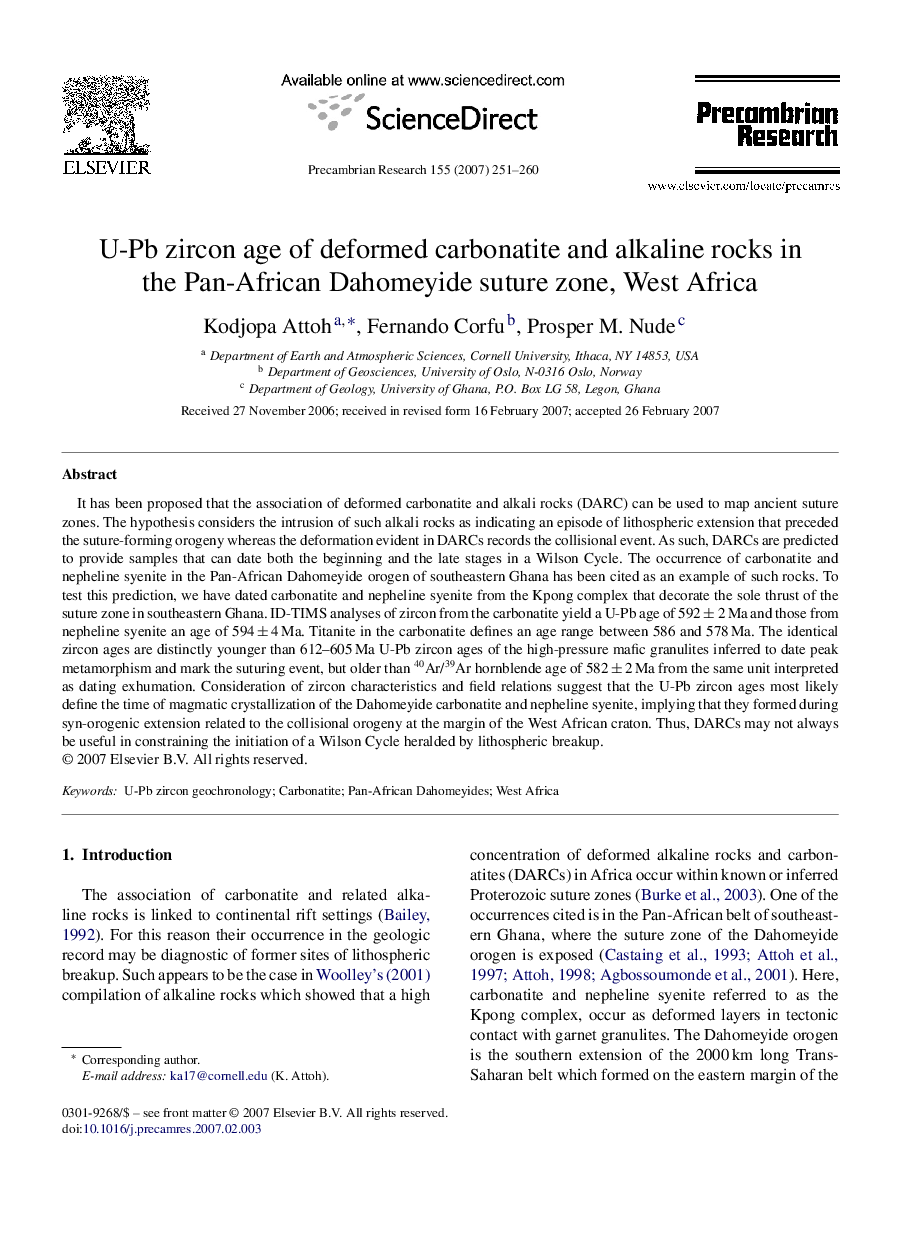| Article ID | Journal | Published Year | Pages | File Type |
|---|---|---|---|---|
| 4724677 | Precambrian Research | 2007 | 10 Pages |
It has been proposed that the association of deformed carbonatite and alkali rocks (DARC) can be used to map ancient suture zones. The hypothesis considers the intrusion of such alkali rocks as indicating an episode of lithospheric extension that preceded the suture-forming orogeny whereas the deformation evident in DARCs records the collisional event. As such, DARCs are predicted to provide samples that can date both the beginning and the late stages in a Wilson Cycle. The occurrence of carbonatite and nepheline syenite in the Pan-African Dahomeyide orogen of southeastern Ghana has been cited as an example of such rocks. To test this prediction, we have dated carbonatite and nepheline syenite from the Kpong complex that decorate the sole thrust of the suture zone in southeastern Ghana. ID-TIMS analyses of zircon from the carbonatite yield a U-Pb age of 592 ± 2 Ma and those from nepheline syenite an age of 594 ± 4 Ma. Titanite in the carbonatite defines an age range between 586 and 578 Ma. The identical zircon ages are distinctly younger than 612–605 Ma U-Pb zircon ages of the high-pressure mafic granulites inferred to date peak metamorphism and mark the suturing event, but older than 40Ar/39Ar hornblende age of 582 ± 2 Ma from the same unit interpreted as dating exhumation. Consideration of zircon characteristics and field relations suggest that the U-Pb zircon ages most likely define the time of magmatic crystallization of the Dahomeyide carbonatite and nepheline syenite, implying that they formed during syn-orogenic extension related to the collisional orogeny at the margin of the West African craton. Thus, DARCs may not always be useful in constraining the initiation of a Wilson Cycle heralded by lithospheric breakup.
